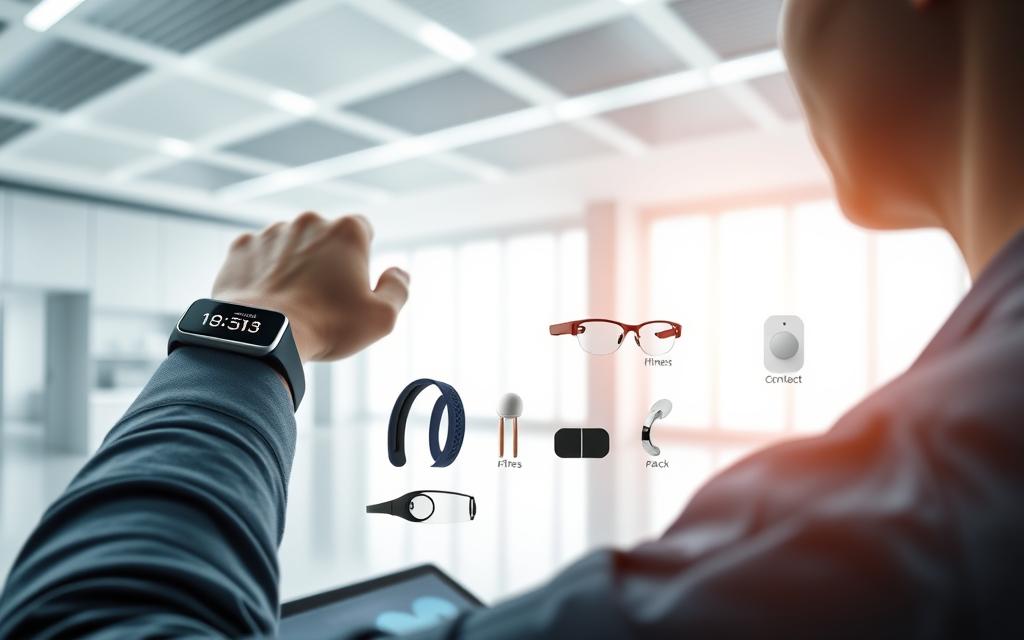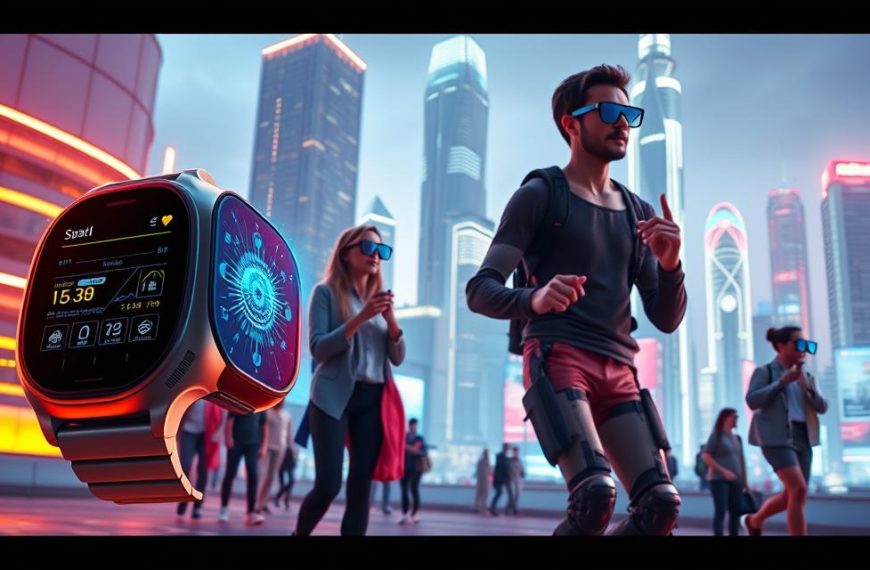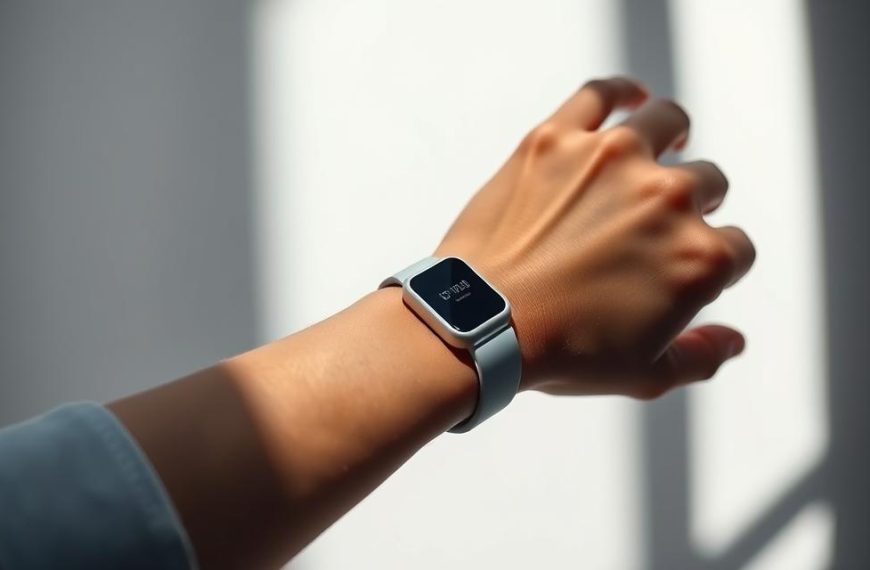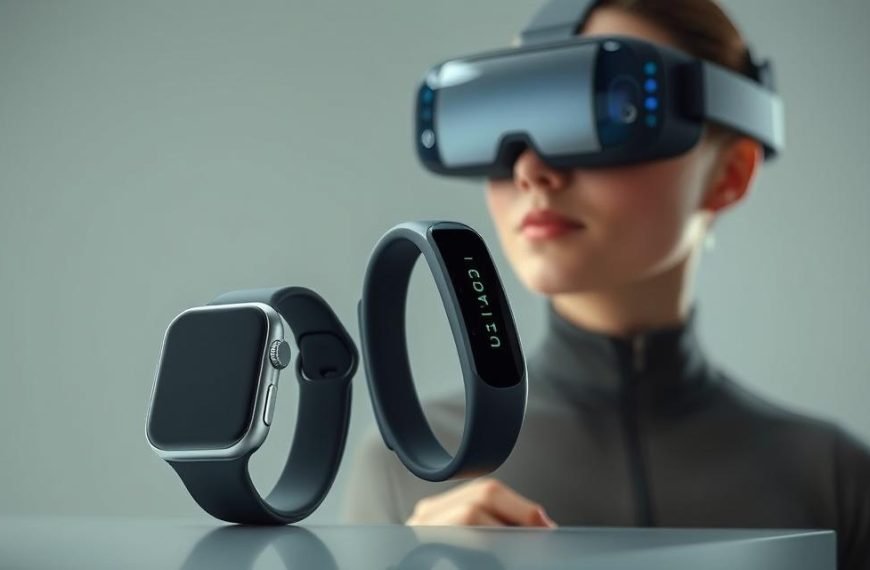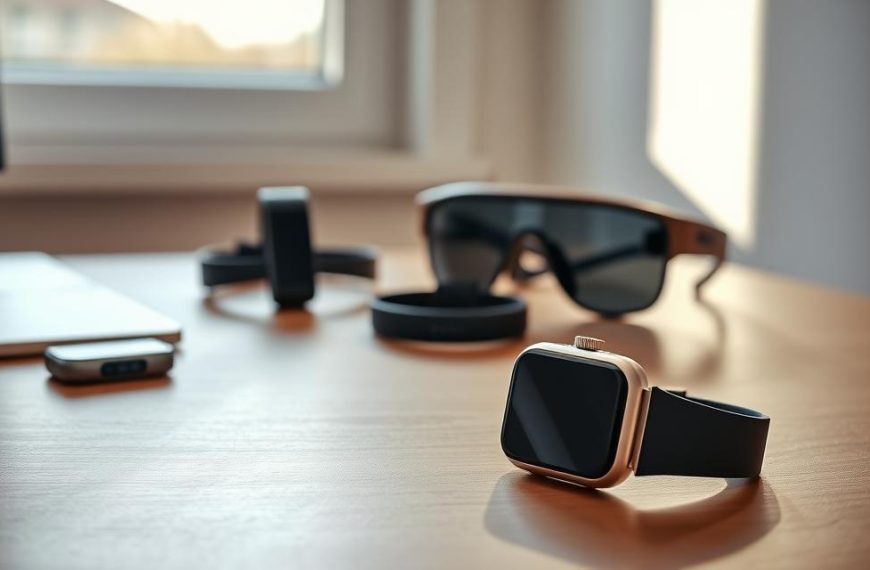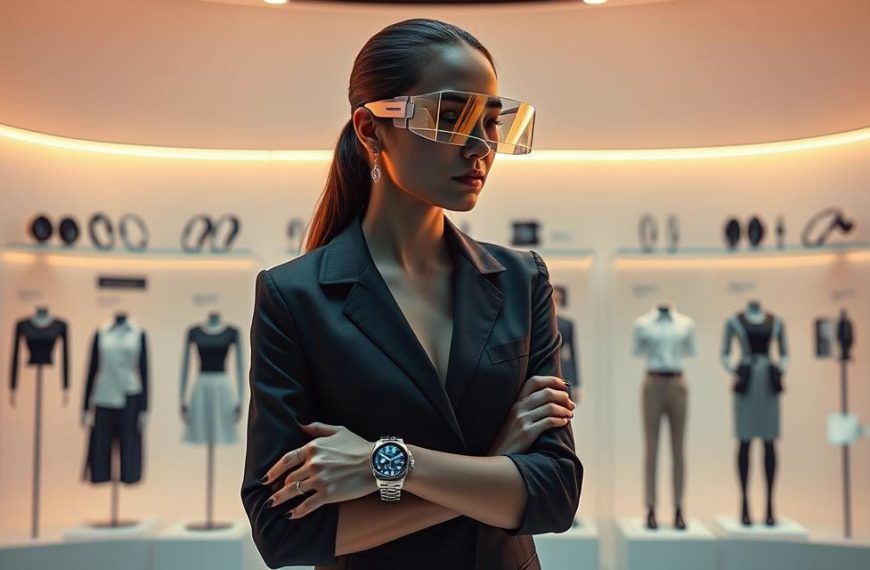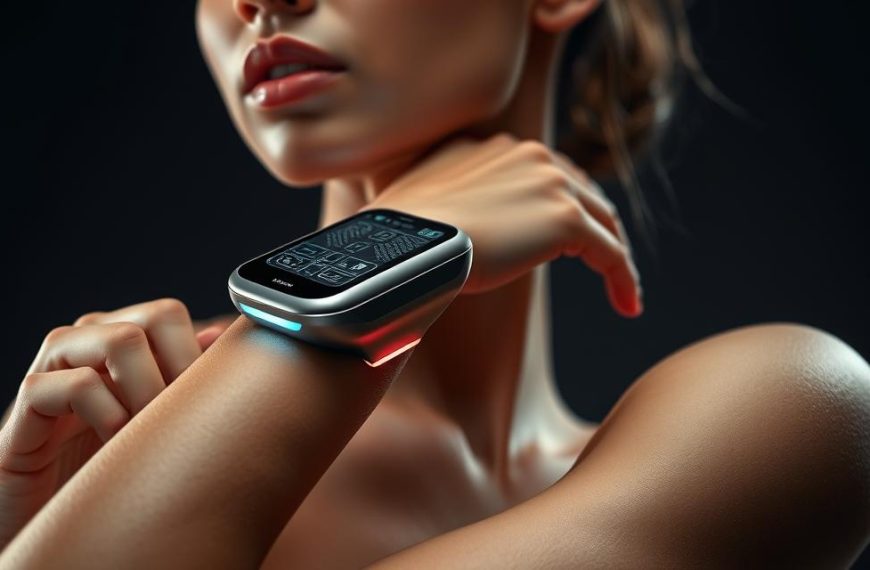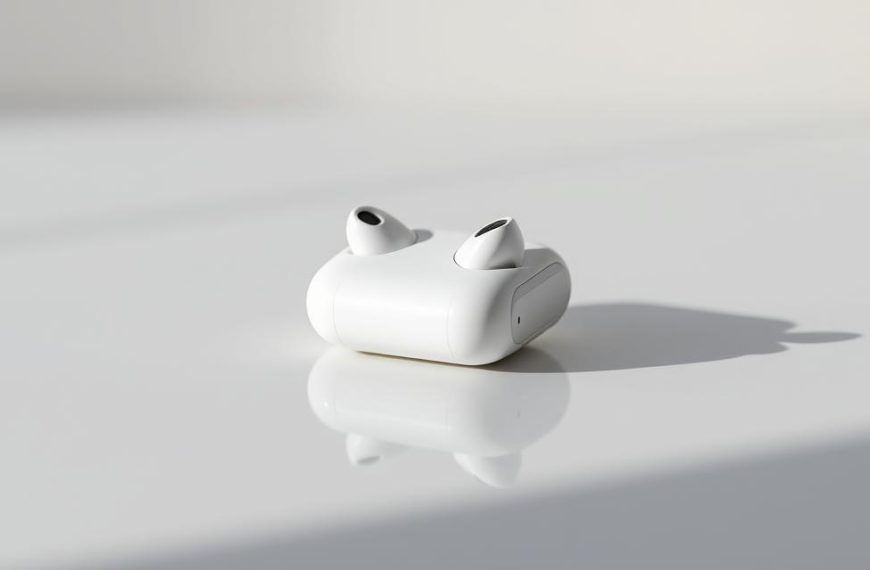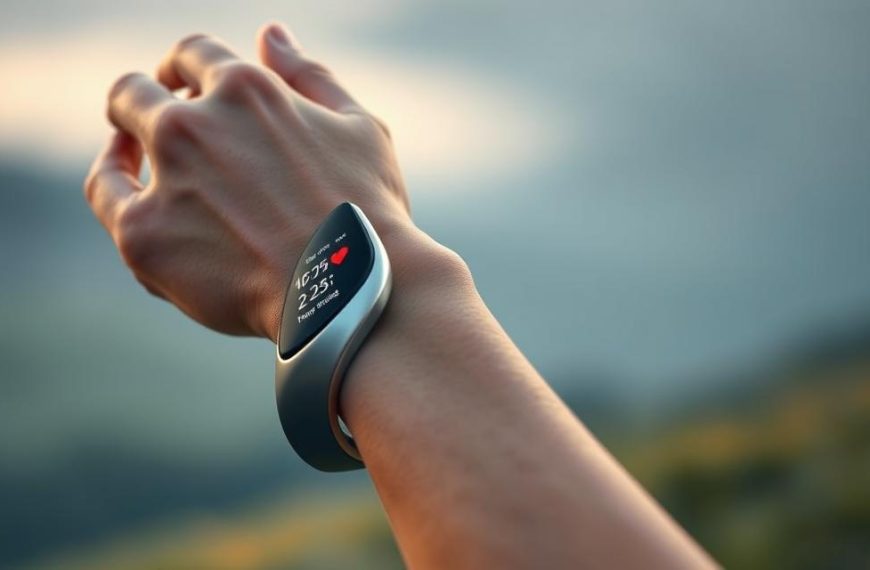The health industry is experiencing a significant shift, driven by innovative devices. These tools are no longer limited to fitness tracking. They now offer advanced medical-grade features, transforming the way we monitor and manage our well-being.
Apple and Fitbit lead the charge, with devices like the Apple Watch rumored to include blood glucose monitoring. Such advancements provide users with real-time insights into their health, reducing the need for frequent hospital visits.
Neuralink’s brain-computer interface marks another breakthrough. This technology aims to treat neurological conditions like Parkinson’s, offering hope for improved patient outcomes. Continuous monitoring through these devices has already reduced hospital readmissions by 16%.
As the $50B market continues to grow, these innovations are setting new standards in healthcare. They empower individuals to take control of their health while supporting medical professionals in delivering better care.
Introduction to Wearable Technology in Healthcare
The rise of advanced devices is revolutionizing personal health management. These tools have evolved from simple fitness trackers to sophisticated medical-grade equipment. Today, they offer comprehensive insights into our well-being, empowering users to take proactive steps toward better health.
The Evolution of Wearable Devices
In the early 2010s, devices like step counters dominated the market. These basic trackers focused on counting steps and calories. Over time, advancements in sensors and software transformed these tools into powerful health monitoring systems.
Modern devices, such as the Fitbit Charge 6, track over 40 biometrics, including skin temperature and heart rate. This evolution highlights the shift from basic fitness tracking to comprehensive health analysis.
From Fitness Trackers to Medical Tools
Today’s devices are designed to provide clinical-grade accuracy. For example, the Omron HeartGuide offers blood pressure monitoring at the wrist, rivaling traditional sphygmomanometers. Similarly, Biostrap uses multiple sensors to measure VO2 max and heart rate variability, offering detailed insights into sleep and activity patterns.
Another standout is the Withings BPM Core, which integrates a stethoscope for cardiac screening. These innovations demonstrate how devices are bridging the gap between fitness and medical care.
| Device | Features | Accuracy |
|---|---|---|
| Fitbit Charge 6 | 40+ biometrics, skin temperature tracking | High |
| Omron HeartGuide | Clinical-grade blood pressure monitoring | Clinical |
| Biostrap | VO2 max, heart rate variability | Advanced |
These advancements are not just about data collection. They empower users with actionable insights, enabling better health decisions. As devices continue to evolve, they are setting new standards in personal and professional healthcare.
How Wearable Technology Will Reshape Healthcare
Real-time health insights are now accessible like never before. Advanced tools are enabling continuous tracking of vital metrics, offering a new level of control over personal well-being. This shift is not just about convenience; it’s about improving outcomes and reducing risks.
Real-Time Health Monitoring
Devices like the Dexcom G7 are revolutionizing care for chronic conditions. With 12-hour glucose forecasts, it provides predictive alerts that reduce hypoglycemia events. This proactive approach ensures patients stay informed and safe.
Similarly, the Nurvv Run analyzes 1,000 data points per step, offering real-time feedback on gait and stride. This detailed analysis helps prevent injuries, making it a valuable tool for athletes and fitness enthusiasts alike.
A case study involving the Apple Watch ECG feature showed a 32% reduction in cardiology visits. By detecting irregularities early, patients can seek timely care, improving their overall health outcomes.
Empowering Patients with Data
Kaiser Permanente’s remote patient monitoring program demonstrates the power of health data. By tracking patients’ metrics remotely, they’ve achieved significant improvements in care quality and efficiency. This approach reduces hospital visits and empowers individuals to manage their conditions from home.
However, challenges remain. Data ownership between providers and patients is a growing concern. Clear policies are needed to ensure privacy while enabling seamless sharing of critical information.
| Device | Feature | Impact |
|---|---|---|
| Dexcom G7 | 12-hour glucose forecasts | Reduces hypoglycemia events |
| Nurvv Run | Gait analysis | Prevents injuries |
| Apple Watch ECG | Heart rhythm monitoring | 32% fewer cardiology visits |
These advancements highlight the potential of remote patient monitoring to transform care delivery. By leveraging data, patients and providers can work together to achieve better health outcomes.
The Role of AI and Machine Learning in Wearables
Artificial intelligence is transforming the way we approach health monitoring. By leveraging predictive analytics, these tools provide actionable insights that were once unimaginable. The global AI healthcare market is projected to reach $148 billion by 2029, underscoring its growing importance.
Predictive Analytics in Healthcare
Devices like the Oura Ring use advanced algorithms to predict illness onset. By analyzing subtle changes in body temperature, it can alert users to potential health issues before symptoms appear. This proactive approach is revolutionizing preventive care.
Current Health’s AI-powered deterioration index is another breakthrough. It helps hospitals identify at-risk patients early, reducing complications and improving outcomes. As the WHO emphasizes, clinical validation of these tools is crucial for their widespread adoption.
Personalized Health Insights
Fitbit’s Stress Management Score is a prime example of personalized health tools. Using heart rate variability and machine learning, it provides tailored recommendations to manage stress effectively. Similarly, Lumen’s metabolic algorithm, trained on 500 million breath samples, offers personalized nutrition advice.
Babylon Health integrates symptom checkers with wearable data, creating a seamless user experience. These technologies empower individuals to take control of their health with data-driven insights.
“AI is not just a tool; it’s a partner in health management, offering insights that were once only possible in clinical settings.”
As these innovations continue to evolve, they are setting new standards for health monitoring. By combining AI and machine learning, devices are becoming smarter, more intuitive, and more effective in delivering personalized care.
Wearable Devices for Chronic Disease Management
Managing chronic conditions has become more precise with the latest advancements in health devices. These tools offer real-time insights, enabling better control over conditions like diabetes and heart disease. By integrating advanced sensors, they provide accurate data that supports proactive health decisions.
Diabetes Monitoring with Wearables
Continuous glucose monitoring (CGM) systems are transforming diabetes care. The Abbott Libre 3, with a 92% MARD accuracy, delivers reliable glucose readings without finger pricks. This device helps users maintain optimal blood sugar levels, reducing the risk of complications.
Medtronic Guardian 4 takes it a step further with automatic calibration. It ensures consistent accuracy, making it easier for patients to manage their condition. A Johns Hopkins study found that CGMs benefit non-diabetics by providing insights into metabolic health.
Omnipod 5 integrates closed-loop insulin delivery, offering a seamless experience. This system adjusts insulin doses based on real-time data, enhancing convenience and safety for users.
Heart Health and Wearable ECG Monitors
Heart health is another area where devices are making a significant impact. The QardioCore measures ECG for 14 days continuously, detecting arrhythmias with high precision. Clinical trials show its effectiveness in identifying irregular heart rhythms early.
Implantable loop recorders are an alternative for long-term monitoring. However, wearable ECG monitors like QardioCore offer a non-invasive solution with comparable accuracy. These tools empower users to take charge of their heart health.
As chronic conditions become more prevalent, these devices are setting new standards in care. They provide actionable insights, enabling better outcomes and improving quality of life.
| Device | Feature | Impact |
|---|---|---|
| Abbott Libre 3 | 92% MARD accuracy | Reliable glucose monitoring |
| Medtronic Guardian 4 | Automatic calibration | Consistent accuracy |
| QardioCore | 14-day ECG monitoring | Early arrhythmia detection |
“The integration of advanced sensors in health devices is revolutionizing chronic disease management, offering patients unprecedented control over their well-being.”
These innovations highlight the potential of health devices to transform care for chronic conditions. By leveraging real-time data, patients and providers can work together to achieve better health outcomes.
Remote Patient Monitoring: A Game Changer
Remote patient monitoring is transforming the way healthcare is delivered. By enabling continuous tracking of vital metrics, it empowers both patients and providers to make informed decisions. This approach is not only improving outcomes but also reducing the burden on healthcare systems.
Reducing Hospital Visits with Wearables
One of the most significant benefits of remote patient monitoring is its ability to reduce hospital visits. For example, RPM has been shown to cut heart failure readmissions by 38%. This is achieved by providing real-time data that allows providers to intervene early, preventing complications.
The VA Health’s RPM program serves over 750,000 veterans, showcasing its scalability. With a $1.6 billion infrastructure investment, the program has demonstrated a strong cost-benefit ratio. Similarly, the Current Health platform has reduced the average length of hospital stays by 2.1 days, further easing the strain on healthcare facilities.
Enhancing Accessibility to Healthcare
Remote patient monitoring is also making healthcare more accessible. TytoCare’s FDA-cleared exam kit, for instance, enables telehealth consultations with clinical-grade accuracy. This is particularly beneficial for patients in rural or underserved areas who may struggle to access in-person care.
ResMed’s COPD management platform is another example of how RPM is improving treatment for chronic conditions. By offering continuous monitoring and personalized insights, it helps patients manage their conditions more effectively. These advancements highlight the potential of RPM to bridge gaps in healthcare accessibility.
“Remote patient monitoring is not just a tool; it’s a lifeline for patients who need consistent care without the constant need for hospital visits.”
As CMS updates its 2024 reimbursement policies, the adoption of RPM is expected to grow. This will further empower providers to deliver high-quality care while reducing costs. The integration of RPM into platforms like Epic and Cerner is also streamlining workflows, making it easier for providers to manage patient data.
In conclusion, remote patient monitoring is revolutionizing healthcare by improving treatment outcomes, enhancing accessibility, and reducing hospital visits. As this technology continues to evolve, it will play an increasingly vital role in the management of patient care.
Wearable Technology and Preventive Healthcare
Preventive healthcare is gaining momentum with advanced tools that focus on early detection and lifestyle improvement. These devices are designed to identify potential health issues before they escalate, empowering users to take proactive steps toward better well-being.
Early Detection of Health Issues
Devices like the Whoop 4.0 are revolutionizing early detection. It monitors respiratory rate anomalies, alerting users to potential health risks. This feature is particularly beneficial for athletes and individuals with respiratory conditions.
Withings Sleep is another standout, analyzing sleep patterns to detect apnea risk. Its partnership with sleep clinics ensures clinical-grade accuracy, making it a trusted tool for sleep health. These innovations highlight the importance of timely intervention in preventing serious health issues.
Promoting Healthy Lifestyles
Fitbit Premium offers over 200 wellness coaching videos, encouraging users to stay active and maintain a balanced lifestyle. Its focus on activity and sleep helps users achieve their health goals effectively.
Noom’s integration with health devices takes it a step further. By combining wearable data with personalized coaching, it supports weight management and long-term habit changes. Muse’s real-time EEG feedback for meditation also promotes mental well-being, rounding out a holistic approach to health.
| Device | Feature | Impact |
|---|---|---|
| Whoop 4.0 | Respiratory rate monitoring | Early detection of anomalies |
| Withings Sleep | Sleep apnea risk analysis | Improved sleep health |
| Fitbit Premium | 200+ wellness videos | Encourages active lifestyles |
“Preventive healthcare is not just about avoiding illness; it’s about empowering individuals to live healthier, more fulfilling lives.”
These tools are setting new standards in preventive healthcare, offering users the insights they need to make informed decisions. By focusing on early detection and lifestyle promotion, they are transforming the way we approach health and well-being.
Innovations in Wearable Health Technology
The integration of advanced sensors into everyday clothing is redefining health monitoring. From smart fabrics to implantable devices, these innovations are making it easier to track vital metrics seamlessly. This shift is not just about convenience; it’s about creating a more intuitive and effective approach to personal health.
Smart Clothing and Biosensors
Hexoskin shirts are a prime example of how smart clothing is transforming health tracking. These shirts monitor respiratory muscle activity, providing insights into lung function and overall fitness. NASA has even used Hexoskin to monitor astronauts’ health in space, showcasing its reliability and precision.
Profusa’s Lumee oxygen sensor is another breakthrough. This tiny device, which lasts over two years, measures oxygen levels in the body. It’s currently being tested in clinical trials for inflammation monitoring, offering a non-invasive way to track chronic conditions.
ETH Zurich has developed a biodegradable pressure sensor that dissolves after use. This innovation reduces waste and provides a sustainable solution for temporary health monitoring. Similarly, Grapheal’s smart wound dressing uses sensors to track healing progress, improving treatment outcomes.
Implants and Neuralink: The Future of Wearables
Implants are taking health monitoring to the next level. Neuralink’s N1 chip, for instance, processes 1,024 electrode channels, enabling precise brain activity tracking. The PRIME Study is currently evaluating its potential to treat neurological conditions, marking a significant step toward the future of health technology.
Profusa’s implantable sensors are also making waves. Designed to monitor tissue oxygen levels, they provide continuous data without the need for external devices. This approach is particularly beneficial for patients with chronic conditions, offering a more comfortable and efficient monitoring solution.
| Innovation | Feature | Impact |
|---|---|---|
| Hexoskin Shirts | Respiratory muscle monitoring | Used by NASA for astronaut health |
| Profusa Lumee | Oxygen level tracking | Clinical trials for inflammation |
| Neuralink N1 | 1,024 electrode channels | PRIME Study for neurological conditions |
“The fusion of advanced sensors with everyday clothing and implants is not just a trend; it’s the foundation of a healthier future.”
These innovations highlight the potential of smart clothing and implants to revolutionize health monitoring. By seamlessly integrating into our lives, they are setting new standards for personal and professional healthcare.
Challenges in Wearable Health Technology
While health tracking devices offer immense benefits, they also face critical challenges. Privacy concerns and measurement accuracy top the list of issues that manufacturers must address. These hurdles could slow adoption if not properly resolved.
Data Privacy and Security Concerns
Nearly 23% of health apps fail GDPR compliance, exposing sensitive user information. The HHS recommends strict de-identification protocols for wearable data to protect personal health records.
Apple HealthKit sets a strong example with end-to-end encryption. However, many platforms struggle with cross-border data rules. The difference between HIPAA and GDPR requirements creates confusion for global health tech companies.
Fitbit faced a class action lawsuit regarding SpO2 accuracy claims. Such cases highlight growing consumer expectations for transparent data handling. Blockchain solutions are emerging to ensure information integrity across systems.
Ensuring Accuracy and Reliability
The FDA recalled 12 devices last year due to calibration issues. Medical-grade validation remains costly, with ISO 80601-2-61 compliance challenging for smaller manufacturers.
Clinical trials show some trackers deviate by up to 20% in heart rate measurements during intense activity. This variance raises concerns about relying on data for medical decisions.
“Precision matters when health decisions hang in the balance. The industry must prioritize validation alongside innovation.”
Third-party testing labs now offer certification programs. These help bridge the gap between consumer and medical device standards. As technology advances, so must the protocols ensuring reliable performance.
Regulatory Compliance in Wearable Tech
Regulatory frameworks play a critical role in ensuring the safety and effectiveness of health devices. These standards protect users while fostering innovation in the industry. Adhering to guidelines set by bodies like the FDA and HIPAA is essential for gaining consumer trust and market approval.
HIPAA and FDA Regulations
The FDA oversees the approval of health devices through processes like the 510(k) clearance, which takes an average of 177 days. AliveCor’s KardiaBand, for example, received De Novo clearance, marking a significant milestone in the industry. This process ensures devices meet rigorous safety and efficacy standards.
Meanwhile, HIPAA safeguards patient data, requiring strict security measures. Platforms like Apple HealthKit set a strong example with end-to-end encryption. However, navigating these regulations can be complex, especially for global companies balancing HIPAA and GDPR requirements.
Navigating the Regulatory Landscape
The EU’s Medical Device Regulation (MDR) introduces stringent requirements, including 10-year post-market surveillance. This ensures long-term safety and performance monitoring. Comparing the CE Mark and FDA approval processes highlights the differences in regulatory approaches across regions.
Philips’ recall of 4 million respiratory devices underscores the importance of rigorous testing. Such incidents emphasize the need for robust compliance frameworks. The EU’s AI Act further impacts predictive algorithms, requiring transparency and accountability in their development.
Verily’s FDA breakthrough designation process demonstrates how innovative solutions can fast-track approval. This pathway accelerates the availability of cutting-edge tools while maintaining safety standards.
| Regulatory Body | Key Requirement | Impact |
|---|---|---|
| FDA | 510(k) clearance | Ensures device safety and efficacy |
| HIPAA | Data security protocols | Protects patient information |
| EU MDR | 10-year post-market surveillance | Guarantees long-term device performance |
“Compliance with regulatory standards is not just a legal obligation; it’s a commitment to user safety and trust.”
User Experience in Wearable Technology
Modern devices are transforming how users interact with their health data. The emphasis on user experience ensures these tools are not only functional but also easy to use. From intuitive interfaces to seamless integration with other platforms, these advancements are making health monitoring more accessible.
Designing Intuitive Interfaces
Garmin’s sunlight-readable MIP displays are a prime example of thoughtful design. These screens ensure users can view their data clearly, even in bright conditions. Such features enhance usability, making it easier for individuals to track their health metrics on the go.
Suunto’s topographic map integration takes navigation to the next level. By combining detailed maps with activity tracking, users can explore new terrains confidently. This blend of functionality and simplicity highlights the importance of user-centric design.
Integration with Apps and Cloud Storage
Apple Health stands out with its ability to connect over 500 device types. This broad compatibility ensures users can consolidate their health data in one place. Similarly, Google Fit’s cross-platform sync capabilities allow seamless data sharing across devices, enhancing convenience.
Polar’s API integration with EHR systems bridges the gap between personal and professional healthcare. This feature enables doctors to access patient data directly, improving care coordination. Whoop’s enterprise health dashboard further demonstrates the potential of cloud storage in managing team wellness.
| Platform | Feature | Benefit |
|---|---|---|
| Apple Health | 500+ device compatibility | Centralized health data |
| Google Fit | Cross-platform sync | Seamless data sharing |
| Polar | EHR integration | Improved care coordination |
“The future of health monitoring lies in creating tools that are as intuitive as they are powerful.”
These innovations underscore the importance of user experience in driving adoption. By focusing on ease of use and seamless integration, manufacturers are setting new standards in health technology.
Affordability and Accessibility of Wearables
Cost-effective solutions are bridging gaps in healthcare access for patients and providers. As health devices become more advanced, ensuring they are affordable and accessible is critical to improving care delivery. Initiatives like the WHO’s SMART guidelines are paving the way for equitable access to essential tools.
Making Wearable Tech Affordable
The WHO’s SMART guidelines focus on scaling up digital health tools in low-resource settings. By prioritizing affordability, these guidelines aim to make devices accessible to underserved populations. For example, the VA has distributed over 250,000 devices to veterans, ensuring they receive continuous care without financial strain.
Medicaid’s RPM reimbursement policies further support affordability. With CMS covering seven RPM codes for Medicare, providers can offer remote monitoring services to patients at no extra cost. This approach reduces the financial burden on individuals while improving health outcomes.
Bridging the Gap in Healthcare Access
Public health initiatives in the US and EU are addressing accessibility challenges. While the US focuses on expanding RPM coverage, the EU emphasizes affordability through subsidized programs. These efforts ensure that health devices reach diverse populations, including those in rural or underserved areas.
Project Baseline’s health equity framework highlights the importance of accessible tools in reducing disparities. By partnering with providers and communities, this initiative ensures that patients have access to the resources they need for better care. As noted in a recent study, accessible health devices can significantly reduce costs and improve outcomes.
“Affordable and accessible health tools are not just a convenience; they are a necessity for equitable care delivery.”
Battery Life and Comfort in Wearable Devices
Battery life and comfort are critical factors in the design of modern health devices. Users expect these tools to perform seamlessly without frequent charging or causing discomfort. Manufacturers are innovating to meet these demands, ensuring devices are both functional and user-friendly.
Overcoming Battery Life Challenges
Long-lasting battery performance is a top priority for users. The Garmin Enduro stands out with a 70-day battery life in smartwatch mode, setting a high standard for energy efficiency. This is achieved through advanced power management and solar charging capabilities.
Coros’ solar charging technology further enhances battery longevity, making it ideal for outdoor enthusiasts. Energy harvesting technologies, like kinetic and thermal energy, are also being explored to reduce reliance on traditional charging methods.
WHOOP 4.0’s 5ATM waterproof design ensures durability while maintaining efficient power usage. These innovations highlight the industry’s commitment to extending battery life without compromising functionality.
Ensuring Comfort for Continuous Use
Comfort is equally important for devices worn throughout the day. The Oura Ring 3 uses 62% recycled titanium, making it lightweight and hypoallergenic. Its sleek design ensures it can be worn continuously without irritation.
Garmin’s UltraFit and QuickFit band systems offer customizable options for a snug fit. Dermatologist-approved materials are increasingly used to prevent skin reactions, ensuring devices are safe for long-term use.
Military-grade durability standards, like MIL-STD-810G, guarantee devices can withstand harsh conditions while remaining comfortable. These features make modern wearables suitable for a wide range of activities and environments.
| Device | Battery Life | Comfort Features |
|---|---|---|
| Garmin Enduro | 70 days | Solar charging, UltraFit bands |
| Oura Ring 3 | 7 days | Recycled titanium, hypoallergenic |
| WHOOP 4.0 | 5 days | 5ATM waterproof, lightweight |
“The future of wearable devices lies in balancing battery efficiency with user comfort, ensuring they seamlessly integrate into daily life.”
Future Trends in Wearable Health Technology
The next wave of innovation in health monitoring is set to redefine personal care. From predictive tools to advanced implants, these advancements are shaping a new era of health management. These technologies are not just about tracking data; they’re about transforming how we approach wellness.
Predictive Wearables and Smart Clothing
Predictive tools are becoming more sophisticated, offering early warnings for potential health issues. Grapheal’s smart bandage, for instance, accelerates healing by 30% while monitoring wound conditions in real time. This innovation demonstrates the potential of smart clothing to integrate seamlessly into daily life.
MC10’s BioStamp is another breakthrough, measuring nerve conduction velocity with stretchable electronics. This platform enables continuous monitoring without compromising comfort. Similarly, graphene-based sweat sensors are being developed for drug monitoring, providing non-invasive insights into metabolic health.
The Role of Implants in Future Healthcare
Implants are taking health monitoring to the next level. DARPA’s Neural Engineering System Design program aims to create a bidirectional neural interface, enabling precise brain activity tracking. This future technology could revolutionize treatments for neurological conditions.
Project Verily’s smart contact lens roadmap highlights another exciting development. These lenses aim to monitor glucose levels in tears, offering a pain-free alternative for diabetes management. MIT’s digestible microbiome sensor trials further showcase the potential of implants to provide real-time health insights.
“The integration of predictive tools and implants is not just a trend; it’s the foundation of a healthier future.”
These innovations underscore the transformative potential of technologies in health monitoring. By combining predictive capabilities with advanced implants, they are setting new standards for personal and professional healthcare.
Conclusion
The future of personal health management is being shaped by groundbreaking innovations. Devices like the Apple Watch, with its FDA-cleared AFib history feature, are setting new standards in care. These tools empower users to monitor their well-being with precision and ease.
The medical wearables market is projected to grow at a 43% CAGR through 2030, reflecting their increasing importance. The VA’s use of RPM has already reduced mortality rates by 18%, showcasing the potential of these tools to save lives.
However, global regulatory alignment is crucial to ensure consistent health data standards. As adoption grows, experts predict that 70% of clinical-grade wearables will be in use by 2029. This shift promises a brighter future for both patients and providers.

